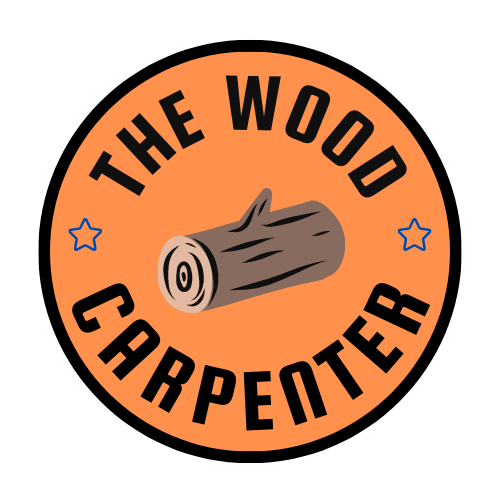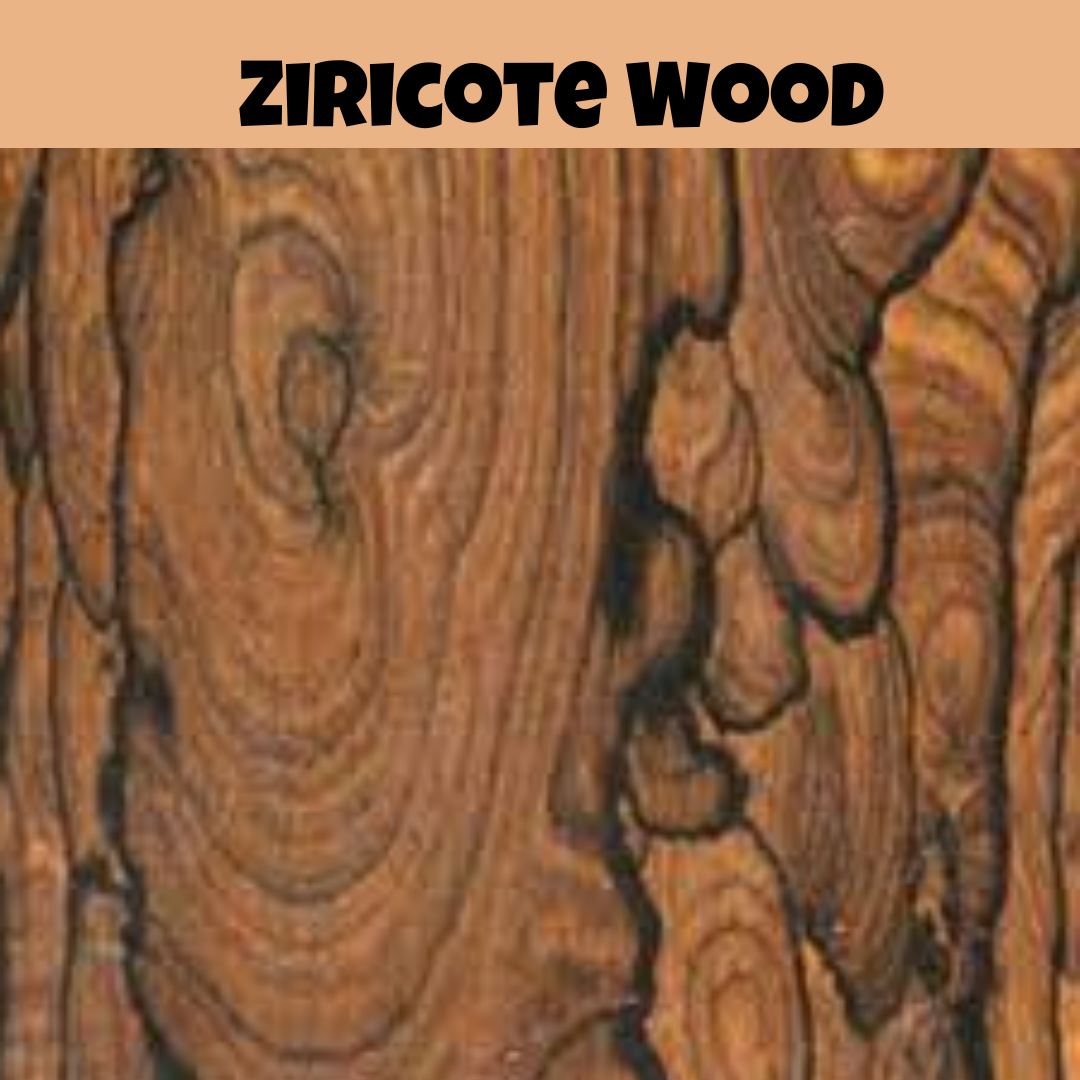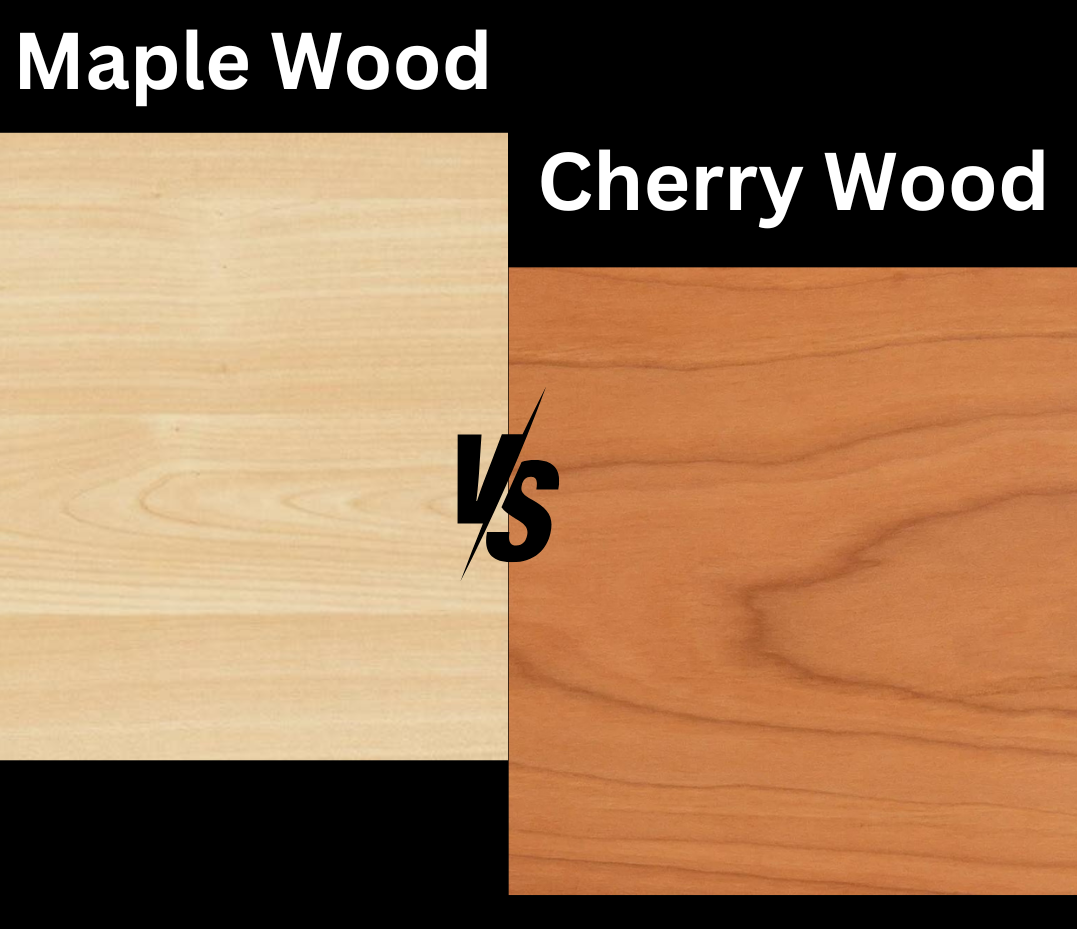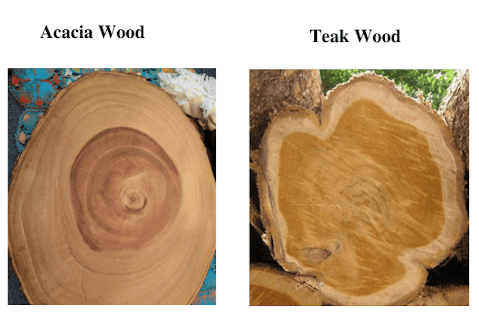What is Ziricote Wood?
Derived from the tree Cordia dodecandra, ziricote wood mainly grows in tropical Central America. Its native distribution runs from southern Mexico through Belize and Guatemala, then reaches Honduras and Cuba in the Caribbean. This species is found in seasonally dry tropical environments defined by particular temperature and rainfall levels.
Unique Characteristics:
Appearance: Ziricote stands out for its dark brown heartwood, usually broken up with black “spider-webbing” designs. Its exotic attractiveness also stems from these unusual grain patterns, which can show swirls and layers reminiscent of landscapes or even brain-like forms.
Durability: This wood is quite robust and decay-resistant, which fits for furniture, cabinets, and musical instruments among other uses. Its durability guarantees that works created from Ziricote will last.
Workability: With both hand and machine tools, Ziricote is usually controllable even if its density makes working difficult due of possible checking while drying. The wood polishes properly to a high finish, which lets craftspeople properly display its complex grain patterns.
Habitat and Distribution of Ziricote Wood:
Growth Conditions:
Climate: Ziricote goes through a dry season spanning three to six months and likes places with yearly temperatures ranging from 19 to 35°C (66 to 95°F). These areas usually get between 900 and 2000 mm (35 to 79 inches) in yearly rainfall.
Soil Requirements: Free-draining loam soils—especially those with a high limestone concentration and a pH range between 7.0 and 8.5—neutral to alkaline—are ideal for the tree.
Though they are more usually seen at heights of 15 to 20 meters (50 to 65 feet), ziricote trees can reach heights of up to 30 meters (98 feet). Usually, its trunk diameter runs from 0.6 to 1 meter (2 to 3 feet).
Ecological Purpose
By giving various creatures food supplies, these trees help in their ecosystems. Wildlife eats the big, edible fruits the trees produce, and they help to maintain the biodiversity of their natural surroundings.
Conservation Status:
Especially in Mexico, this wood is in danger from illicit logging and overharvesting of its excellent timber. Though CITES or the IUCN Red categorize does not now categorize this wood as threatened, growing demand for this wood raises questions over its long-term viability.
Generally speaking, ziricote wood thrives under specific climatic circumstances that support its development and growth in particular tropical areas of Central America.
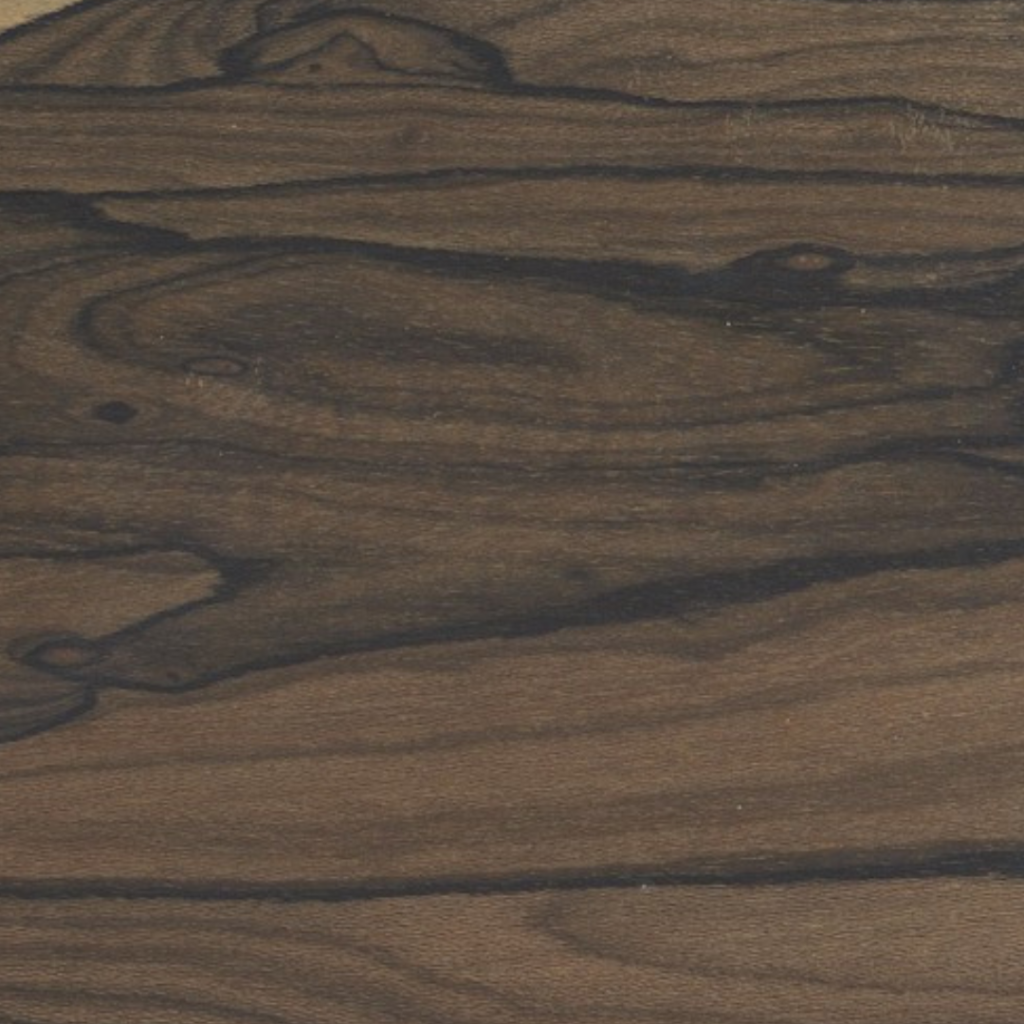
Advantages of Ziricote Wood
Aesthetic Appeal: Ziricote is well-known for its stunning visual appeal; dark brown heartwood with black streaks and complex grain patterns like those of spider webs or landscapes. High-end furniture and décor products seek out its unusual beauty.
Durability: The dense and robust wood has a Janka hardness value of roughly 1,970 lbf (8,780 N), which helps it to be wear and tear resistant. Its innate resilience to deterioration and insect damage adds even more to its lifetime, fit for both indoor and outdoor uses.
Workability: It is rather easy to handle with both hand tools and machinery despite its density. It cuts, twists, glues, and finishes perfectly so that artists may produce items with great quality.
Versatility: This wood finds application in furniture construction, cabinets, musical instruments (particularly guitars), veneers, and beautiful carvings. For many woodworking projects, its adaptability makes it an invaluable resource.
Stability: Once properly dried, Ziricote shows low movement in reaction to humidity and temperature variations, which helps to preserve the integrity of final goods.
Disadvantages of Ziricote Wood
Cost: It can be somewhat costly given its exotic character and restricted availability when compared to other often used hardwoods. Some do-it-yourselfers or frugal enterprises may find this greater expense prohibitive.
Allergic Reactions: Some people dealing with this wood may have allergic responses. Those sensitive to other woods such as Pau Ferro or Cocobolo have also reported reacting to Ziricote.
Drying Issues: Correct handling of ziricote can prevent end checks or surface cracks throughout the drying process. Although once dried it is stable; the first drying step needs close observation to avoid flaws.
Natural Oils: Sometimes Ziricote’s inherent oils interfere with bonding and finishing techniques. Often advised to remove these oils before applying finishes or adhesives is to guarantee correct adhesion.
Common Uses of Ziricote Wood
Furniture: It is quite sought after for building cabinets, chairs, and tables of fine craftsmanship. Its distinctive colors and grain patterns improve the visual attractiveness of any kind of environment.
Musical Instruments: Particularly acoustic and electric guitars, this wood is rather common in the building of musical instruments. The tonal qualities of Ziricote are valued by artists.
Cabinetry: It is frequently used in cabinets since of its appealing finish and robustness. It’s found in custom built-ins, bathroom vanities, and kitchen cabinets.
Veneer: It is commonly sliced into veneers for decorative applications. The beautiful patterns make it an excellent choice for accent walls or furniture surfaces.
Woodturning: Bowls, pens, and other small specialist products fit perfectly the density and workability of the wood. It can be polished to a great gloss and keeps detail really nicely.
Carvings: Because of its fine texture and capacity to capture detail, artists frequently employ Ziricote for delicate carving. For this reason, woodcarvers and sculptors really like it.
Boatbuilding: It is also used in boatbuilding, especially for interior and decorative accents given its resilience to deterioration.
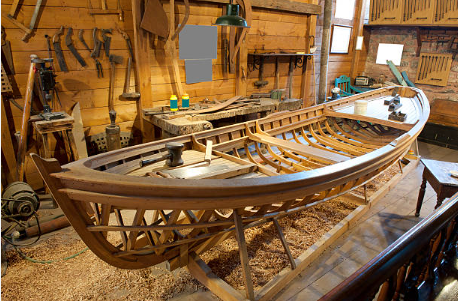
Medicinal Uses: Beyond building, the Ziricote tree’s bark has long-standing therapeutic value. Certain societies utilize it to create drinks said to cure diseases including dysentery and coughing.
How to Identify Ziricote Wood
Color: Typically ranging from reddish-brown to dark brown, the heartwood of Ziricote is sometimes mixed with erratic black streaks or zones. By contrast, the sapwood is readily recognizable from the heartwood by its dull off-white to pale yellow color.
Grain Pattern: Dramatic grain patterns of ziricote are well-known; they can mimic abstract motifs, landscapes, or spider webbing. Usually straight, the grain can also be just barely interlaced. Its unusual look helps to explain why it is among rare timbers in great demand.
Texture: The medium to fine texture of the wood lets it take a smooth finish and great shine. This feature appeals visually and fits for fine woodworking projects.
Density and Weight: It is among the denser woods in the Cordia genus; its specific gravity falls between 0.85 and 0.97. Its weight relative to many other hardwoods and durability depend on its density.
Workability: It is usually easy to work with both hand and machine tools, however it can be somewhat brittle and may develop end or surface checks during drying. It glues, cuts, flips, and finishes flawlessly.
FAQs
1. What makes ziricote wood unique?
Ziricote wood is unique due to its dramatic, often landscape-like grain patterns and rich colors, ranging from deep brown to olive with black streaks.
2. Is ziricote wood good for musical instruments?
Yes, it is highly valued in the making of guitars and other instruments for its tonal properties and beautiful appearance.
3. How do I care for ziricote wood furniture?
Regular dusting with a soft cloth and periodic polishing with a quality wood wax are recommended to keep this wood in excellent condition.
4. Where does ziricote wood come from?
Ziricote is native to Central and South America, primarily found in Belize, southern Mexico, and Guatemala.
Also read: Understanding Sapele Wood: Pros and Cons Explained
